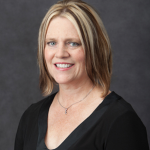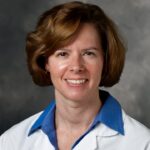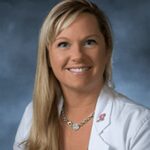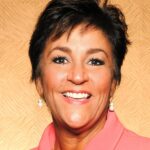
Daily Schedule for CME Conference at Walt Disney World®
Whether you practice full-time and strive to sharpen your skills, or you work occasionally and need to improve your knowledge base, there’s something for everyone here! Perhaps you just want to stay current and pass your recertification exams. Plus, this exciting program allows participants to come early and/or stay over the weekend for a vacation. Discounted hotel rates apply! Schedule is preliminary.
Topics, times and presenters subject to change.
APRN Pharm Credit to be updated
Product Theater (Non-CME) denoted by *
*Number of hours depends on your course selection. Rx denotes Pharmacology hours. Daily CME credits listed are the maximum number of credits available for that specific day.
Sunday, October 15 – Early Registration 2:00 – 5:00 pm
- October 16
Day 1 – Monday
Dermatology - October 17
Day 2 – Tuesday
Orthopedics (Room A) - October 17
Day 2 – Tuesday
Pain Management/Pharmacology Update
(Room B) - October 18
Day 3 – Wednesday
Cardiology & Emergency Medicine
(Room A) - October 18
Day 3 – Wednesday
Diabetes (Room B) - October 19
Day 4 – Thursday
Women’s Health

Terri Nagy, MPAS, PA-C, DFAAPA
View Speaker Bio
6:30 – 8:00 AM Registration and Breakfast
7:30 – 8:30 AM Breakfast & Learn Sponsored by Novo Nordisk
8:30 – 9:30 AM It is Getting Kind of Hairy in Here! (Rx=0.25)
Thanks to COVID, hair loss has become much more commonplace. Amanda Mull published an article in The Atlantic on November 12, 2021, entitled “The Year America’s Hair Fell Out,” specifically referring to telogen effluvium. However, there are several different types of hair loss. This session will explore some of the most common types, the clinical presentations, diagnostic criteria, and treatment options.
9:30 – 9:45 AM Break
9:45 – 11:15 AM What is THAT in My Groin? (Rx=0.50)
It hurts! It itches! It won’t go away! Yes, we are going there. Why? Because this particular region presents with concerns that are difficult and embarrassing for patients to discuss, hard to diagnose, and extremely impactful when it comes to quality of life. We will explore such diagnoses as inverse psoriasis, lichen sclerosis, and hidradenitis suppurative.
11:15 AM – 12:30 PM Sponsored Lunch or Lunch on Your Own
12:30 – 2:00 PM Skin Cancer! Damn! (Rx=0.50)
What is a dermatology conference without a session on skin cancers? Let’s look at the three big contenders, their presentations, diagnostic methods, and treatment options.
2:00 – 2:15 PM Break
2:15 – 3:45 PM Kids, Bugs and Drugs (Rx=0.50)
As a derm PA, I can honestly say I have spent the majority of the last 19+ years tending to the needs of pediatric patients. This session will look at some common (and a few not-so-common) pediatric concerns. You will certainly take away a few pearls for diagnosing and treating these little ones.
3:45 – 4:45 PM A Year in Pictures: AKA What The???
Every year, National Geographic releases their most remarkable photos in a publication called ‘A year in Pictures.’ We will spend our last session together looking at photos depicting various dermatologic conditions. You will have your chance to diagnose these conditions. We will then briefly discuss each case, diagnostic methods, and treatment options.

Karen Myrick, DNP, APRN, FNP, ONP, FAAN
View Speaker Bio
6:30 – 8:00 AM Registration and Breakfast
7:30 – 8:30 AM Orthopedic Exam and CT Scans, X-rays and MRI’s, OH MY
A head-to-toe review and presentation of the key components of the examination of the musculoskeletal system will be discussed. High yield history questions and examination techniques will be detailed. Diagnostic testing for orthopedic and sports medicine chief complaints and mechanisms of injury will be discussed and recommended.
8:30 – 9:30 AM Let Me Give You a Hand in Diagnosing Upper Extremity Injury and Conditions
Upper extremity injuries and conditions are common causes of patient visits to providers. Up top! This session will review the most common issues and highlight what the clinician should listen for in the history, and which examination techniques will be helpful in arriving at the patient’s diagnosis.
9:30 – 9:45 AM Break
9:45 – 11:15 AM Let Me Patella You Something About Lower Extremity Injuries and Conditions
This might be a knee-jerk reaction, but this is a session you all kneed. There is a wide span of differential diagnoses for the commonly injured or affected knee joint and lower extremities. We will systematically identify the evaluation, diagnosis and management of conditions and injuries which affect the lower extremities.
11:15 AM – 12:30 PM Sponsored Lunch or Lunch on Your Own
12:30 – 2:00 PM When the Back is Out of Whack….
Back pain for the patient can be lower posterior pain for the provider! In this session, we will identify back problems seen in primary care, along the continuum of simple and common to complex and rare, the diagnoses of spinal issues will be discussed.
2:00 – 2:15 PM Break
2:15 – 3:45 PM Interactive Case Studies
This session will tie together concepts and techniques learned throughout the day. An interactive session, the participants will be asked to comment, help to come up with a list of differential diagnoses, and to identify key components of the history and physical examination, to make the perfect final orthopedic diagnosis.

Theresa Mallik-Searle, MS, PMGT-BC, ANP-BC
View Speaker Bio
6:30 – 8:00 AM Registration and Breakfast
7:30 – 8:30 AM Demystifying Pain Assessment: What Every Clinician Needs to Know (Rx=1.00)
At least 116 million U.S. adults, more than the number affected by heart disease, diabetes, and cancer combined, suffer from chronic pain. Across the life span, pain is one of the most frequent reasons for healthcare visits, among the most common reasons for taking medications, and a major cause of work disability.
Effective management of pain requires an understanding of the underlying mechanisms responsible for its generation. Additionally, effective clinical interviewing and pain assessment is critical to the appropriate diagnosis and management of pain. In this presentation, a general overview of pain mechanisms will be discussed. The clinician will learn how to apply principles of effective communication and ascertain how to evaluate available assessment tools to form a framework for a comprehensive patient-centered approach to formulation and treatment planning.
8:30 – 9:30 AM Rational Polypharmacy for Pain Management: The Non-opioid Version (Rx=1.00)
With the opioid crisis continuing to rage, the number of opioid-related deaths continuing to rise, insurance companies refusing to pay for quantities of opioids, pharmacists refusing to dispense quantities of opioids, peer-to-peer watchdogging, what is a clinician to do about helping manage their patient’s pain? This lecture will focus on using rational polypharmacy effective for the management of pain.
We will explore clinical indications, contraindications & dosing for common non-opioid analgesics, such as the use of anticonvulsants, antidepressants, and over-the-counter analgesics.
You will learn where analgesics act in the pain pathway and how the use of medications synergistically may make sense to use together.
9:30 – 9:45 AM Break
9:45 – 11:15 AM Safe Opioid Prescribing: How, When & When Not to Prescribe (Rx=1.50)
In response to the public health crisis of opioid abuse and overdose, the U.S. Food & Drug Administration issued a Risk Evaluation and Mitigation Strategy (REMS) recommendation for all opioids. The REMS is part of a larger federal effort to reduce risks associated with prescribing long-term opioid therapy. This national response has recognized that improved knowledge of opioid safety is an essential clinical practice competency for all prescribers of opioids.
This lecture will discuss pain from a contextual perspective, patient selection, and assessment of risk associated with opioid use for long-term management of chronic pain. The CDC guideline for prescribing opioids for chronic pain and the use of opioids for short-term acute pain will also be discussed. A brief discussion on the consideration for and initiation of medication-assisted therapy (MAT). Prescribing opioids safely ultimately depends on the trust between the prescriber and patient. Training can improve trust by improving communication and collaborative skills.
11:15 AM – 12:30 PM Sponsored Lunch or Lunch on Your Own
12:30 – 2:00 PM Casting a Wider Net, the Use of Non-pharmacological & Complementary Treatments
Pain affects physical and mental functioning, quality of life, and productivity. Yet, in recent years, the over-reliance on pharmacotherapies alone has been seen as a highly ineffective way of managing chronic pain. As a result, the HHS Pain Management Best Practices Inter-Agency Task Force in 2019 released a report for best practice in managing chronic and acute pain, highlighting the use of a multimodal treatment strategy for improved outcomes.
Clinicians need the education, resources, and tools to engage and effectively manage their patients with chronic pain. In this up-to-date review, we will discuss the most practical, evidenced-based, possibly overlooked non-pharmacological modalities that clinicians can use as stand-alone therapies or in a combined multimodal treatment approach for the best possible outcomes in managing patients with chronic pain conditions.
2:00 – 2:15 PM Break
2:15 – 3:45 PM The Chronic Pain Trifecta: Common Pain Diagnoses in Primary Care (Rx=1.50)
In this session, we will cover the assessment and management of three of the most common chronic pain diagnoses in primary care – migraine, low back pain, fibromyalgia – highlighting what was learned in the earlier lectures regarding evidenced-based pharmacological and non-pharmacological approaches. Assessment and treatment of migraine have advanced in recent years. No longer should patients’ have to wait for a referral to a “headache specialist” for management. Instead, we will simplify the diagnosis, rule out a secondary/pathological headache, and introduce the newest treatments available.
The diagnosis of fibromyalgia was once seen as a diagnosis of exclusion, possibly psychosomatic in origin. However, new research provides evidence that fibromyalgia is a central pain disorder. With new evidence to a more accurate diagnosis, new treatment paradigms are being explored.
Low-back pain is the number one reason patients present to their primary care provider’s office. At some time in their lives, every patient will suffer from LBP (either acutely or chronically). When it comes to effective treatment of LBP, it’s all about making the correct diagnosis.
By the end of this 90-minute lecture, you will gain the skills to assess migraine like a Neurologist, manage fibromyalgia like a Rheumatologist and treat low back pain like a Physiatrist!

Jennifer Carlquist, PA-C, ER, CAQ
View Speaker Bio
6:30 – 8:00 AM Registration and Breakfast
7:30 – 8:30 AM EKG 123: A Basic Review
This session will focus on the “10 Step System” to reading an EKG, contagious and reciprocal changes. We will discuss the intervals on the 12 lead and how they help you make your diagnosis. In addition, we will review the segments and the waves of the EKG and compare and contrast a normal EKG against an ischemic EKG.
8:30 – 9:30 AM Cardiac Cocktails: Are We the New Bartenders? (Rx=0.50)
• AF “cocktails” and treatment strategies
• The Heart Failure “Martini” and how to adjust to taste
• The “Cardiac Happy Meal” – post-STEMI treatment regimen
• Common side effects of cardiac medications and how to spot them
Participants will learn strategies to combat AF and use the CHADS score to define risk.
CHF recipes will be discussed on how to adjust/maximize diuretics and how the new novel agents may play a role in treating CHF. We will also discuss the role of the “Cardiac Happy Meal” and tailor the medications to prevent side effects. Finally, a case-based review of some of the more common side effects of cardiac medications and how to identify them will be discussed.
9:30 – 9:45 AM Break
9:45 – 11:15 AM Common Cardiology Complaints and How to Work Them Up
In this presentation, we will review specific questions to ask a patient who has palpitations, what findings you must look for every time, what tests to order on a chest pain patient, and what differentials to consider on someone who is dyspneic.
11:15 AM – 12:30 PM Sponsored Lunch or Lunch on Your Own
12:30 – 2:00 PM Cardiac Murmurs – Whispers of the Heart
We will review murmur terminology, grading, and the five murmurs that you cannot afford to miss. This presentation will be presented in a case-based fashion.
2:00 – 2:15 PM Break
2:15 – 3:45 PM How Much Should I Worry About This EKG?
Real EKGS and cases will be reviewed. This lecture is a “Can’t-Miss” topic if you do sports physicals! We will cover the five findings that could have very different outcomes, including Brugadas Syndrome and Hypertrophic cardiomyopathy. We will also discuss the EKG Findings associated with each of these high-risk findings and the findings to spot that the machine will miss!
Optional Workshop
4:00 – 6:30 PM Hands-On EKG Workshop + $99
In this 2.5 hours hands-on course, we will cover all these things and more! We will discuss reciprocal changes and contiguous leads. You will get a chance to draw them on your sample EKG and make it into a cheat sheet you can use in the clinic. You will go hands-on in your workbook with 17 EKGs in class using pattern recognition to spot the high-risk findings. This hands-on approach helps you “put it all together” finally. If you feel overwhelmed by all the things we have to know but don’t know where to start, this is a quick condensed course that only focuses on the high-risk findings you need to know to be a safe provider.
This is a hands-on workshop. If you register for the in-person conference & workshop, you must attend the workshop in-person.

Dianna Isaacs, PharmD, BCPS, BCACP, CDCES, BC-ADM, FADCES, FCCP
View Speaker Bio
6:30 – 8:00 AM Registration and Breakfast
7:30 – 8:30 AM Current State of Diabetes and Standards of Care
This session will include the prevalence and incidence of diabetes, distinguish between the different types of diabetes, how they are diagnosed, and the treatment goals.
8:30 – 9:30 AM Pharmacologic Treatment for Type 2 Diabetes (Rx=0.75)
In this presentation, we will discuss the treatment algorithms from the American Diabetes Association and the Association of Clinical Endocrinology and introduce the various pharmacologic options.
9:30 – 9:45 AM Break
9:45 – 11:15 AM The Ins and Outs of Insulin Therapy (Rx=0.75)
This session will include differences between types of insulin, how to calculate doses, how to make adjustments, and how to use insulin in conjunction with oral and non-insulin injectable medications.
11:15 AM – 12:30 PM Sponsored Lunch or Lunch on Your Own
12:30 – 2:00 PM Reducing Cardiovascular Risk (Rx=0.75)
This session will focus on the foundational pillars of reducing risks for people with diabetes including managing lipids and blood pressure, and a deep dive into the data that supports use of GLP1 agonists and SGLT2 inhibitors to reduce cardiovascular risk.
2:00 – 2:15 PM Break
2:15 – 3:45 PM Diabetes Technology and Beyond (Rx=0.50)
This presentation will explore the different types of diabetes technology including continuous glucose monitors, connected insulin pens, insulin pumps and mobile apps to support people with diabetes.

Shelagh Larson, DNP, APRN, WHNP-BC, NCMP
View Speaker Bio
6:30 – 8:00 AM Registration and Breakfast
7:30 – 8:30 AM The Gyn Visit: Bleeding, Cyst, and Fibroids (Rx=0.25)
In this session, we will start getting those dreaded Gyn visits out of the way. We will go in-depth into why there is heavy or no bleeding and how to test and treat it. Next, we will tackle the cyst issue that haunts every ObGyn. You will be able to understand what and why, and how to treat. Next, the fibroid fiasco will be broken down. You will be able to discuss these concerns like a champ. We will also have time to discuss some vulvar issues.
8:30 – 9:30 AM Contraceptive Update: What’s New, Out and in the Pipeline (Rx=0.50)
Contraceptive choices have widened. In the second session, we will examine not only what’s new for women, but male contraceptives will be introduced. You will understand why you would lick one over another, and I’ll even provide a “cheat sheet” for when you get home.
9:30 – 9:45 AM Break
9:45 – 11:15 AM STI Update: CDC 2021 STI Treatment Guidelines (Rx=0.75)
Just when you memorized the old STD treatments, CDC came along and changed the name and treatment regimen. We will discuss why the name changed from STD to STI, additional STI screenings, and the modifications in treatments. We will also discuss your role in the treatment of sexual partners.
11:15 AM – 12:30 PM Sponsored Lunch or Lunch on Your Own
12:30 – 2:00 PM Menopause Matrix: Rising from the Hot Flash Ashes (Rx=0.50)
STIs are not the only treatment modality to get a facelift. The North American Menopause Society (NAMS) updated menopause guidelines in 2022. A point of clarification will happen during this session. You will leave this conference confident about hormone therapy and prescribing to menopausal women.
2:00 – 2:15PM Break
2:15 – 3:45 PM Not Tonight Honey, I Have a Headache: Sexual Dysfunction (Rx=0.50)
We will end the day with a little sex (discussion). You will appreciate the different sexual response phases and what drugs and conditions that interfere with them. You will have all the right tools to open sexual health discussions and understand “what and why” there may be a problem. Alternatives, medications, and new treatments will be examined.